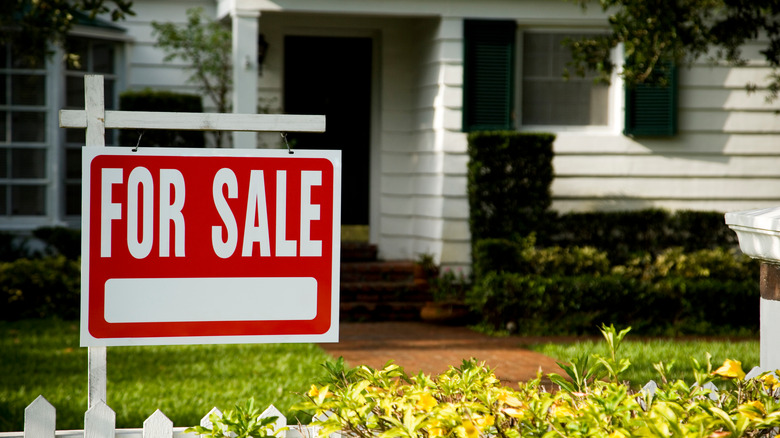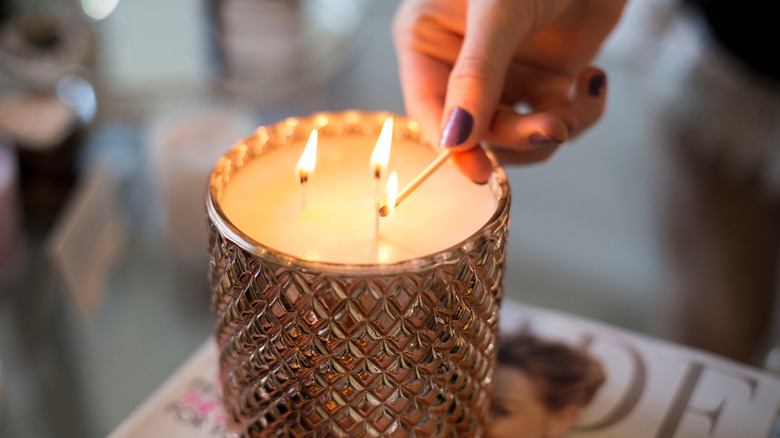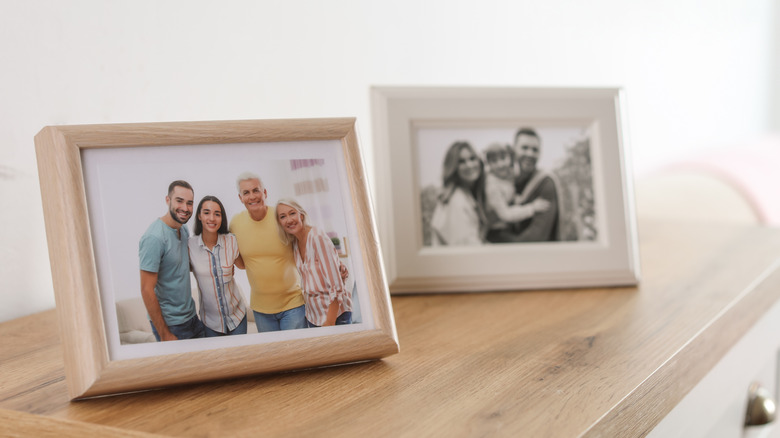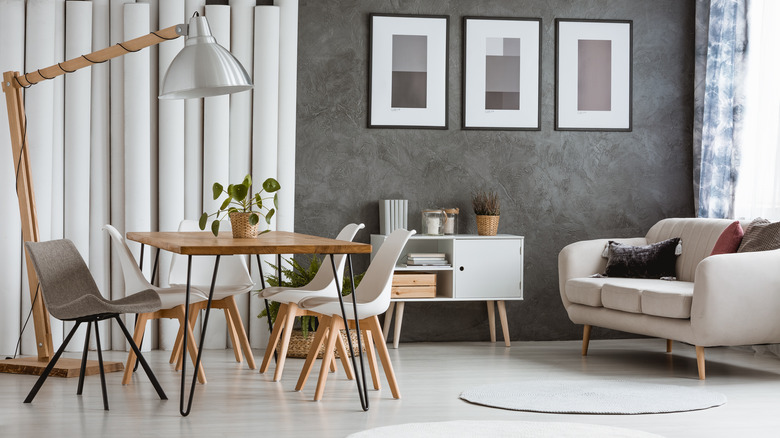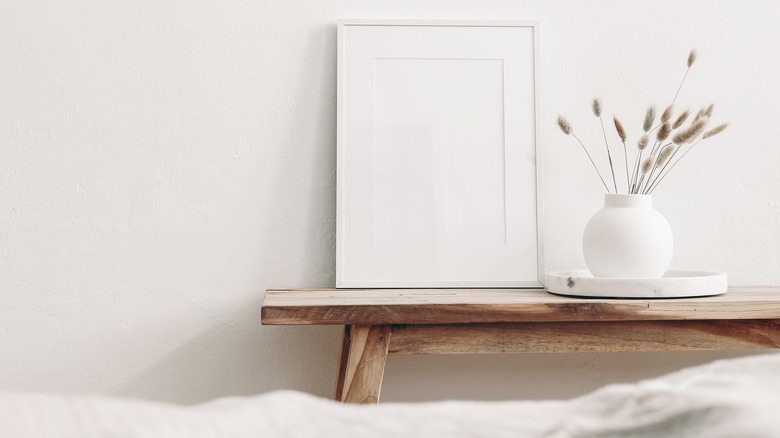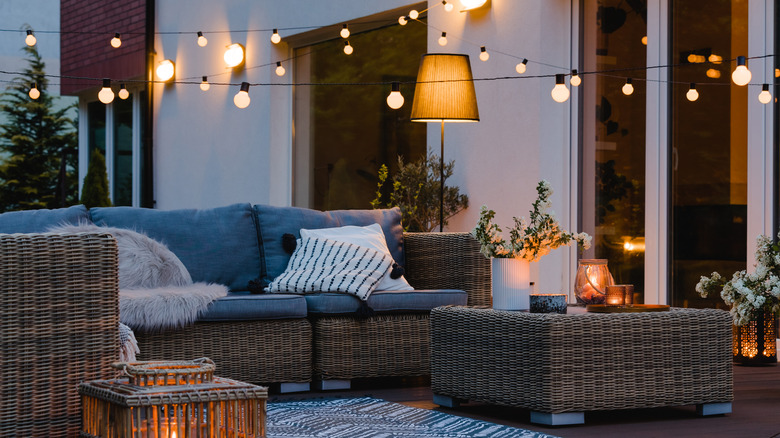The Biggest Mistakes Home Sellers Make With Staging
If you've ever put your home on the market and watched it languish for months with little to no attention — despite your best efforts to advertise and get the word out — there may have been one crucial component missing: staging. Of course, the listing price could be too high, renovations could be needed, or the location isn't desirable. But, often, homeowners neglect the way the interior of their home looks to strangers and how it could dissuade potential buyers from making an offer.
The ultimate goal with home staging is to help buyers visualize themselves living in your home. By making your property shine its brightest, staging also translates to better listing photos, which are crucial selling tools these days since an online listing is often the first impression a buyer will have of your home. So, even if you don't want to enlist the help of a professional home stager to spruce up your place, take some tips from the pros about what not to do when staging your home for sale.
Don't use overpowering fragrances
First impressions are everything. So you don't want to turn off potential buyers the second they step through the door with an obnoxious scent. Sure, in a perfect world, your house would always smell like Anthropologie. But, in reality, it probably has some lingering pet odors or scents from last night's dinner. And there's not much worse than a bad smell that's very obviously being covered up by an overpowering fragrance.
Apartment Therapy suggests getting to the source of the odor instead of just trying to mask it. Whether it's coming from the kitchen or the air everywhere smells a bit stale, a top-to-bottom cleaning is the route to take. Pet odors linger in soft materials, so shampoo those carpets, wash the curtains, and freshen up any throw pillows or blankets. Don't forget to use white vinegar in the laundry to fight odors because bad smells can remain in towels and bath mats even after they've been washed — which can make touring a bathroom not so pleasant.
Don't display personal touches
Personal touches like family photos and children's artwork make a house feel like a home, but, when you're trying to sell your house, it's time to remove them. What's the rationale? "A psychological factor is at work here: When buyers see a home filled with personal items, they can't envision the home as their own," according to BobVila.com. This is a huge pitfall to avoid since the whole purpose of staging is to allow buyers to picture your home as their future home.
The fix for this is easy. Simply store those family photos away in a closet or pack them in a box when you're showing the home. But you don't want the home to look spartan, either, so add some modern prints or abstract art where the family photos used to be. (Target and Ikea are great sources for inexpensive wall art.) You can also hang up some mirrors, which helps brighten the space to boot.
Another bonus? By packing up personal items ahead of time, it'll be one less thing on your to-do list when it's time to move.
Don't overcrowd rooms with furniture
Whether your home is 1,000 square feet or 5,000 square feet, too much furniture crammed into one room will make the space feel tiny. This is a common mistake that sellers commit fairly often. They think, "Buyers will be amazed by how much you can fit into this room," but it rarely translates that way in reality.
Staging Studio suggests always leaving at least 36 inches of walking space in each room. If potential buyers have to weave their way around a giant sectional, clunky coffee table, and hefty end tables, they're going to feel cramped. This will not help them visualize fun future get-togethers in that room.
Remember, decluttering is a critical component of staging a home. So don't be afraid to put some of that extra furniture in a storage unit until your house sells. Or donate it if you don't envision using it in the future.
Don't come off as bland
You can never have too many neutrals, right? Wrong! You need a bit of carefully curated contrast for visual interest within your home. Otherwise, it can come off as bland. "Don't use the exact same shade of paint everywhere," suggests BobVila.com. "If every room seems the same rather than its own special place, your home becomes forgettable."
There's an easy design trick that lets you keep your neutrals without sacrificing style. Keep the main palette neutral, but layer in colors or patterns with your throw pillows, artwork, rugs, and blankets, per HomeLight. This is a quick, affordable way to add just enough personality without overdoing it.
Remember, you want your home to be memorable in a good way. There's nothing special about beige walls and oatmeal-colored carpet in every room. If potential buyers look at five houses in one day and they're all starting to blend together, you want yours to be the one they remember.
Don't neglect your outdoor spaces
A huge mistake that sellers often make with staging is neglecting their outdoor spaces. They put all their time and energy into the interiors and completely forget about the potential they've lost outside.
Livable outdoor spaces are especially trendy right now, so you'll need to take it a step further than just mowing your grass if you want to wow a buyer. Staging Studio says you want to "create an irresistible stay-cation ambiance" in your outdoor spaces. Even if your budget is tight, you can liven up your porch, patio, or deck without spending a ton of cash. HomeLight believes three simple things can go a long way: a cute bistro table and chairs set (bonus points if you find a fun centerpiece for it), string lights to add a cozy vibe, and topping potted plants with cedar bark for a more Insta-worthy aesthetic.
Remember: You want to create an environment that a buyer wants to spend time in, so stage accordingly.
